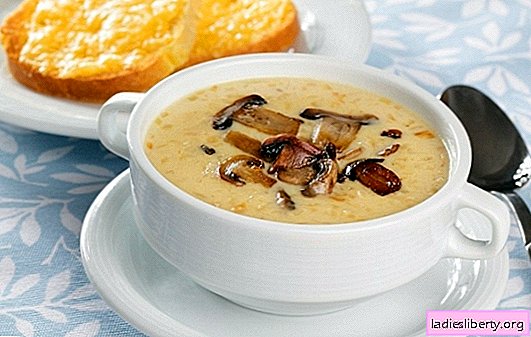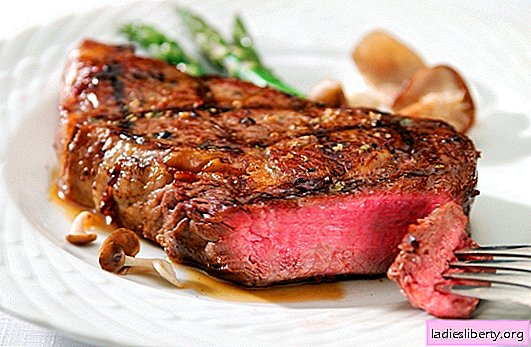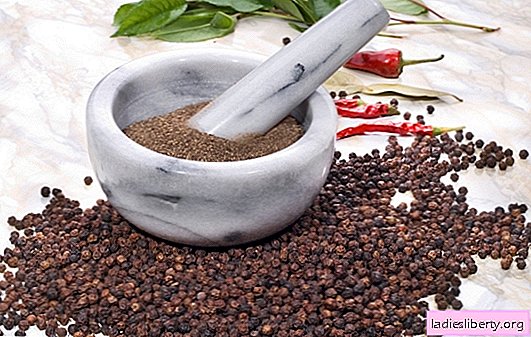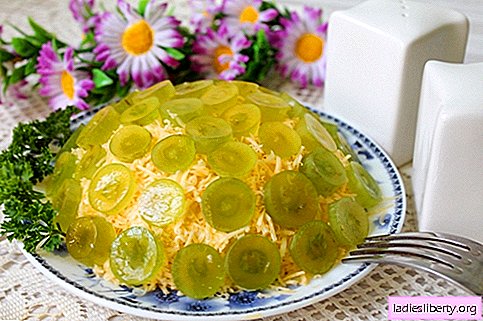
Watermelons are demanding to heat and light - before they were grown only in the southern regions.
To the delight of the summer residents, many varieties and hybrids of this juicy berry have been developed, which are also suitable for cultivation in the middle lane.
But living in the north of the country, where cloudy days are so often observed, do not expect abundant harvests - the fruits, of course, will grow, but their flesh will not have so rich taste.
This does not stop many gardeners - watermelons that have not had time to ripen can always be pickled by getting an exquisite delicacy.
Choosing a watermelon variety
Watermelon - gourd culture, belonging to the pumpkin family. If you choose the right grade, taking into account the peculiarities of the climatic zone, you can get ripe fruits in the end of the season until the end.
To date, hundreds of varieties and hybrids of watermelon are bred. All of them are divided into 10 groups according to geography. Russian gardeners prefer to grow those species that belong to the Russian, Transcaucasian and Central Asian groups. They are more adapted to our weather conditions - withstand the cold. If you decide to choose foreign hybrids, please note that they will require more thorough care and a large amount of fertilizer - this is an option for experienced gardeners. But their main advantage is good resistance to diseases and pests. Foreign experts pay much attention to the shape and taste of watermelon, creating varieties whose fruits have an excellent presentation.
For cultivation in our country the following varieties of watermelons are suitable:
• Astrakhan. The fruit ripens 70-81 days. Ripe watermelon has a rounded, slightly oblong forum, the peel of a dark green color, delicious juicy flesh. With good care, fruits can reach 10 kg.
• Chill. Maturation term - up to 97 days. The fruit is round, dark green with light specks. Watermelon mass reaches 7 kg.
• Photon. The variety does not differ large fruits - watermelons grow to 4 kg. Peel - light green in color with green stripes.
• Crimson Suite Ripening time - up to 82 days. Sweet fruit by weight up to 5 kg has a round shape. Peel - smooth, shiny.
• Crimson Glory F1. The variety is resistant to diseases and can be stored for a long time subject to temperature conditions. Fruits are very large - up to 15 kg.
• The light. The variety is perfect for small gardens, because the fruits are not very large - up to 2 kg. Ripens in 70-81 days. Peel - thin, black and green.
• Sugar baby. Round shaped fruits (up to 4 kg by weight) reach maturity in 75-85 days.
• Madera F1. Ripens quickly - for 70 days. Watermelon weighing up to 8 kg - slightly elongated, with a pattern in the form of spots and stripes on the peel. The flesh is crispy, juicy.
• Sun Gift Watermelons oblong form ripen in 63-73 days. Crust - yellow, not very thick. The flesh is sweet, juicy, red.
• Charleston Gray Unusual variety that looks like zucchini. Peel - pale green, no patterns. The flesh is a uniform red hue, sweet and juicy. The mass of one fruit can reach 12 kg.
For growing watermelons in the middle and northern latitudes of Russia, choose fast-growing varieties that are resistant to frost. Do not look for those varieties of seeds that will give large fruits - they will not have time to ripen to the end in unsuitable climatic conditions, and they will take a lot of space in the garden.
For the southern regions fit any hybrids. But note that they must endure drought.
Site preparation for growing watermelons
Choose a well-lit, protected from strong winds area for growing watermelon. The best option is the south or southeast side of the garden. The root system of the gourd culture develops a bulk mass of the roots, and therefore, it is undesirable for groundwater to pass close to the surface of the earth. The best precursors of watermelon are legumes and cabbage. But from his landing after the "related" pumpkin refuse. Take more space under the bakhchu - the lash will move along the ground. To save space, you can make supports for the watermelon so that the plant rises up. Fruits in this case are "packed" into nets and grow in weight. This method is more suitable for the greenhouse cultivation of watermelons.

Growing watermelons on poles
Watermelons grow better on light sandy or sandy sandy soil - it is well heated by the sun. In the heavy earth will accumulate a lot of water, which will prevent the gourd culture to gain weight. If the soil is acidic, alkalize it, because watermelon loves neutral or slightly alkaline soil.
Having planned to get melons for the next season, till autumn, dig up the beds with mineral fertilizers and wood ash. Before transplanting seedlings to a permanent place, prepare the beds. Place them from north to south. The distance between the holes is 60-80 cm. Dig a recess of 50 cm and a diameter of 40-50 cm. The seedling will take root better if you fall asleep in the wells of 2 compost buckets and 1/3 of a sand bucket. Mix the nutrient mixture thoroughly and you can begin to transfer the seedlings to open ground.
Experienced gardeners, in order to create ideal conditions for development for the root system of a watermelon, mulch melons with black covering material. Cover the beds with a special film, then make the "windows" for planting seedlings. Using this method of cultivation, you will save your time and energy on weeding melons and protect the fruit from pests. Water the plants right on top of the material - it perfectly passes water.

Growing watermelons under the film
Watermelon planting
Planting watermelon seeds immediately in open ground in the middle lane makes no sense - the ground for germination should warm up to at least 15-16 ° C - it is likely that by the end of the season the watermelons will not reach maturity. Therefore, it is better to prepare seedlings in advance. This method is often used in the southern regions.
Seedlings begin to cook in April and May. If you do this earlier, seedlings outgrow. Prepare the seeds before planting - soak them in hot water (no higher than 60 ˚C) for 20-30 minutes or leave them wrapped in a damp cloth. Germination can not wait - plant seeds in nutrient soil. For the cultivation of watermelon seedlings suitable substrate consisting of turf land, sand and peat. It is better not to use a seed box - separate containers with a capacity of at least 0.6 l will be more suitable. Cover the pots with glass or plastic to create greenhouse conditions for the pots.
When shoots appear above the ground, provide seedlings with proper care:
• The optimum temperature is 20-25 ˚C.
• Good lighting for at least 10 hours. When it is cloudy, be sure to illuminate the plant.
• After 10-14 days after emergence, feed each plant with water-soluble complex fertilizers. Do not use organics!
• Watering is plentiful but not frequent.
• Regular loosening.
If, before planting in the ground, the seedlings will greatly stretch, carefully roll the stalk into a semi-ring, sprinkling it with moist soil.

Ready for transplanting watermelon seedlings
The time of transfer of seedlings to prepared melons depends on the climatic conditions of a particular region. Focus on the end of May / beginning of June - the earth should warm up enough. A week before planting, begin to harden them, bringing them to fresh air for a while. When the night temperature does not fall below 7-9 C, you can begin landing work. Seed the seedlings carefully, so as not to damage the root system. If it's warm outside, you can not cover the plants.
Watermelon Care
If you properly care for watermelons, at the end of the season, the taste of the fruit will certainly please you. This is a fastidious enough culture - the summer resident will have no time for rest. The rules are as follows:
• Watering. Since watermelon has a long root, the crop can withstand drought. But if there is an opportunity, be sure to water the plants - abundant, but not often. Norm - 3 buckets per 1 m2. When the ovaries appear on the lashes, the plants will need more moisture — watering at least 2 times a week. And during the active ripening of fruits, moisture can be minimized, so as not to slow down the process. After watering, do not forget to loosen the soil.
• Feeding. During the season, be sure to spend 2 feeding - 2 weeks after planting and during the formation of ovaries. For the first fertilizer, use slurry or chicken manure diluted in water. Add superphosphate and potassium chloride to the mixture. Use minerals a second time to feed.
• Scourge. Watermelon develops long scourge. Throughout the season, direct them in the right direction and sprinkle with earth so that they do not get confused and do not take root. They can be fastened with hooks. Many gardeners use trellis, which lashes go up. Scourge pinch over the 5th or 6th leaf of the last watermelon on the branch. The fruits themselves will be formed on the main stem. On one stalk should be no more than 2-3 ovaries, because the development of a larger number of watermelons in one plant does not have enough nutrients. If necessary, remove the rest of the ovary.

Watermelon Lash Pinching
Pollination often occurs naturally. But bees, if it is not very sunny outside, they can not cope with their “duty” - then they will have to do it themselves. With the stamen of one flower, tap the pistil of the other. After 20-30 days after pollination on the watermelon ovaries will begin to form.
Many varieties of watermelon cease to grow if the street is below 15 C, therefore, occasionally you need to cover the landing. And when the fruits begin to ripen, gently turn them from time to time for even ripening. On open ground, put something under them so that the crust does not start to rot.
Harvesting
Do not rush to remove the fruits at the end of the season, as even large specimens may be immature. It's time to cut the watermelon when:
• peel - with a clear bright pattern
• when tapping - a dull sound,
• aroma - saturated.
Cut the lash so that the watermelon has a small stem.
Over-grown fruit cannot be stored for a long time. The rest, under the right conditions, lay for 3-5 months. Watermelons can be hung or laid on shelves with dry bedding. Store your crop in a basement or any other dark ventilated room. The only condition - there should not be any vegetables. The optimum temperature is 5-8 C.
Before being sent for storage, experienced gardeners pollinate watermelons with 2% lime. Do not forget to check the fruit from time to time. If you notice traces of insects or diseases, remove the berry from the rest of the crop.
How to protect watermelons from pests and diseases?
Watermelons love to eat birds, especially the crows. To avoid damage to the crop, pre-install near bahchi scarecrow. Diseases and insects, if the summer resident observes all the conditions of watermelon care, it seldom affects him.
Denote diseases that can harm landings:
• White rot. Appears where it is too humid and often changes in temperature. The fungus spoils the foliage and scourge of watermelon, the plant is suspended in growth, the fruits ripen not so juicy and fragrant. Having noticed a whitish bloom on the watermelon, its rotten parts should be destroyed and the planting treated with a solution of copper sulphate.
• Black rot The cause of its occurrence is a fungus that can be tolerated even by insects. Remove the damaged parts of the plant, weed the ground and treat with chlorine.
• Mealy dew. Infected leaves are covered with whitish spots. The green parts of the plant die off, the fruits become unpleasant to taste. Powdered with powdery mildew, whips and fruits must be destroyed. Process the soil with caratan suspension.
• Anthracnose. Brown or yellow spots appear on the foliage of watermelon. If you do not take measures in time, the lashes become covered with dark "ulcers" - the plant gradually dies off. Having noticed the disease, immediately treat the plantings with a suspension of cuprozan and bordeaux fluid. Land necessarily weed.

Watermelon anthracnose
• Root rot. Soil fungus is actively developing in cool, wet weather. The watermelon root becomes thick and gradually cracks. Fruits can not be saved if the rot struck the whole root.
As for insects, the melon aphid sometimes attacks the watermelon. In just a few days, the pest can hit the fruit badly. This is a small insect wintering on weeds. Aphid colonies settle on the lower leaves of the plant. When insects begin to multiply, they can be seen even with the naked eye. The affected watermelon grows poorly (it lacks nutrients) and can die.
It is better to prevent the appearance of melon aphid than to fight it. Always remove weeds from the beds, weed the soil. Small pest colonies can be washed off with watermelon. It also helps dusting wet foliage with ashes. With the entire aphid invasions, spray planting chemicals.











